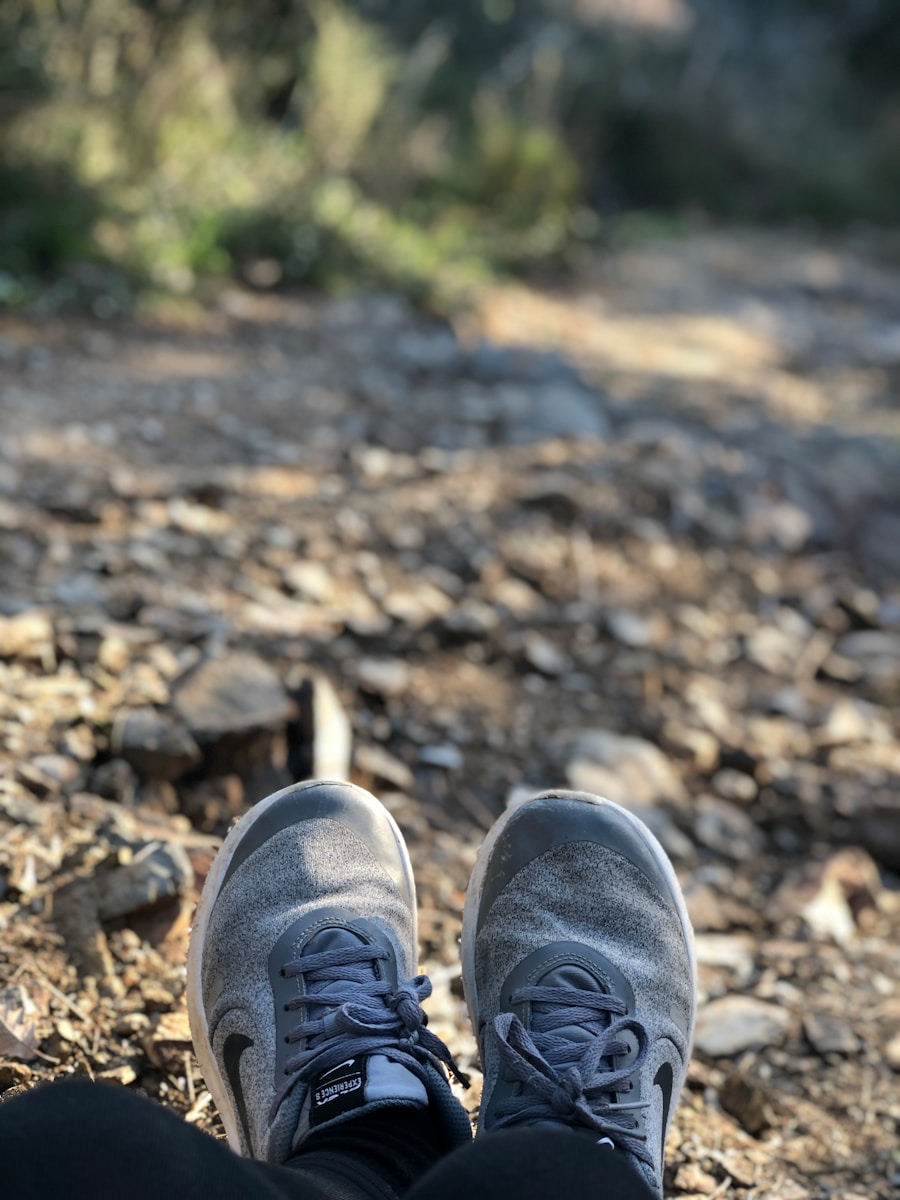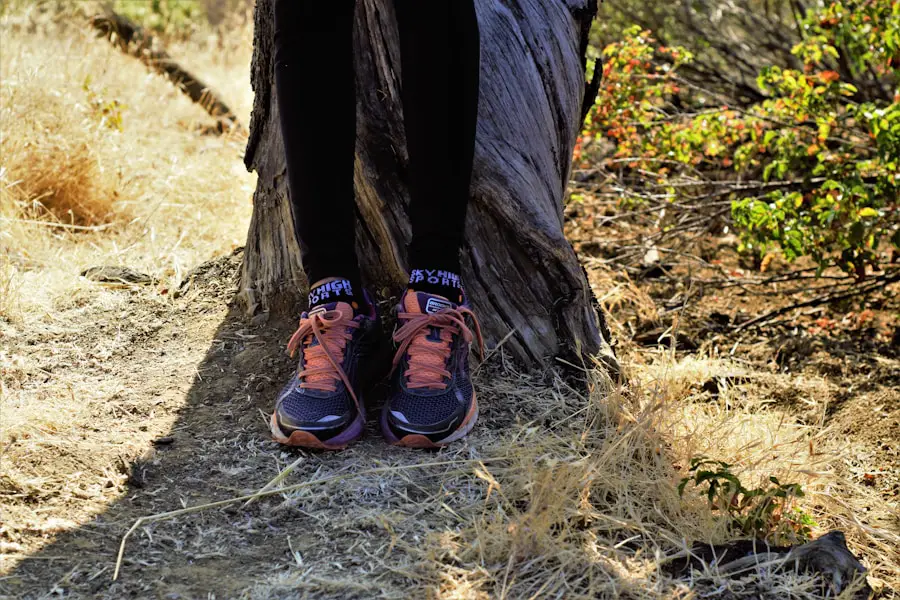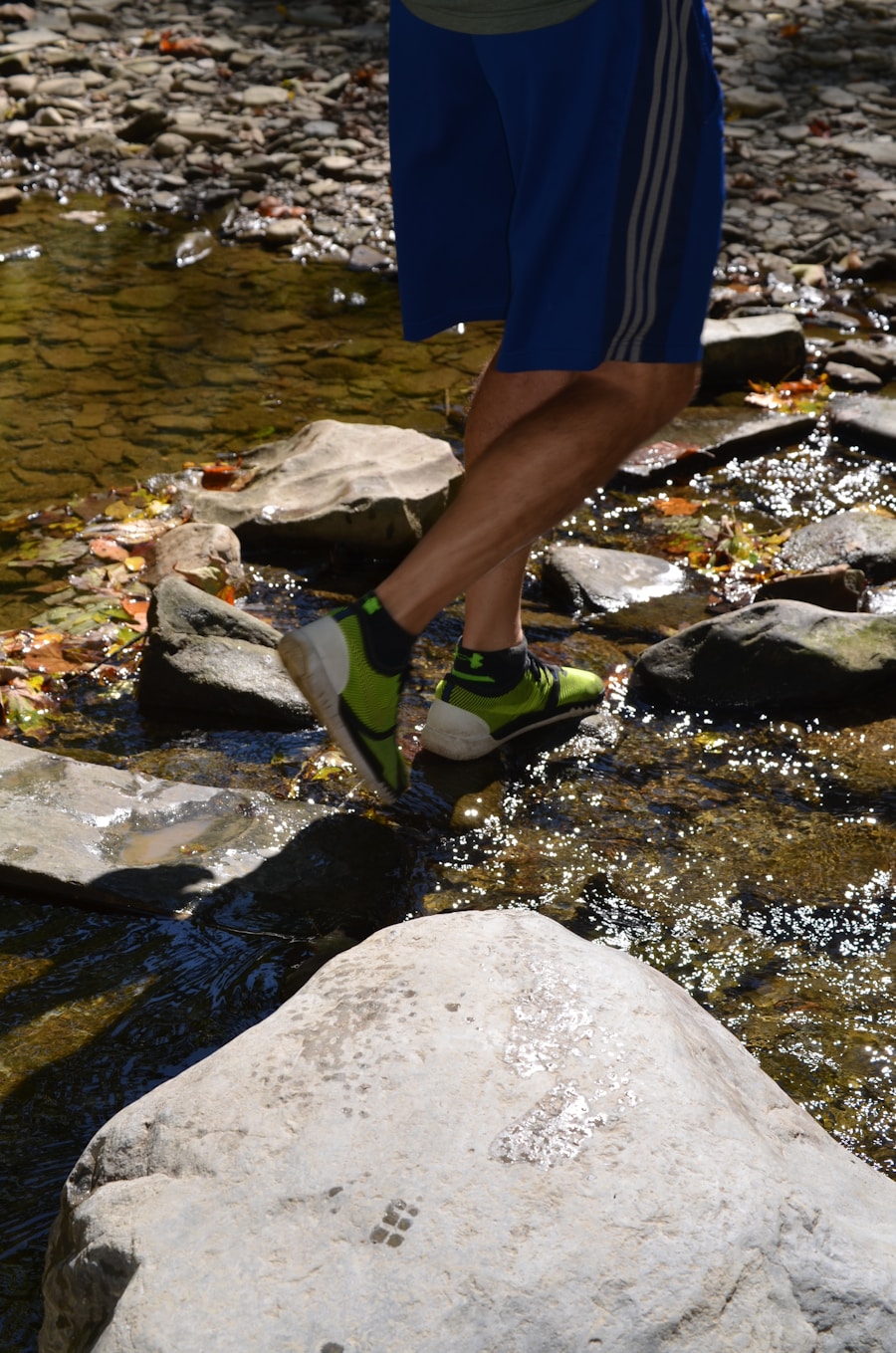When it comes to outdoor activities, the choice of footwear can significantly impact performance and comfort. Hiking shoes and running shoes are designed with different purposes in mind, leading to distinct features that cater to the specific needs of each activity. Hiking shoes typically offer a sturdier construction, with a focus on durability and support.
They often feature a thicker sole, which provides better traction on uneven terrain, and a more rigid structure that helps protect the foot from rocks and roots. The materials used in hiking shoes are generally more robust, designed to withstand the rigors of rugged trails and varying weather conditions. In contrast, running shoes prioritize lightweight construction and flexibility.
They are engineered to facilitate forward motion, with a focus on cushioning and shock absorption to protect the feet during repetitive impacts. The soles of running shoes are often made from softer rubber compounds that provide excellent grip on pavement or packed trails but may not hold up as well on rocky or uneven surfaces. Additionally, running shoes typically have a more breathable upper to keep the feet cool during high-intensity activities.
This fundamental difference in design reflects the unique demands of hiking versus running, making it essential for enthusiasts to choose the right footwear for their specific activities.
Key Takeaways
- Hiking shoes are designed with more ankle support and traction for uneven terrain, while running shoes are lighter and more flexible for quick movements.
- Proper footwear is crucial for preventing injuries and providing comfort during different activities such as hiking, running, and walking.
- Hiking shoes are not ideal for running due to their heavier weight and stiffer construction, which can cause discomfort and reduce performance.
- Running shoes can be used for light hiking on well-maintained trails, but they lack the necessary support and protection for more rugged terrain.
- Using hiking shoes for running can provide better stability and protection on rough terrain, but they may feel heavy and less responsive compared to running shoes.
The Importance of Proper Footwear for Different Activities
Proper footwear is crucial for any outdoor activity, as it directly affects performance, safety, and overall enjoyment. Wearing the right shoes can prevent injuries such as blisters, sprains, and other foot-related issues that can arise from inadequate support or improper fit. For hikers, the right shoes provide stability on uneven ground, reducing the risk of slips and falls.
The added ankle support found in many hiking boots can also help prevent ankle injuries, particularly when navigating steep or rocky trails. For runners, the importance of proper footwear cannot be overstated. Running shoes are designed to accommodate the biomechanics of running, providing the necessary cushioning and support to absorb impact forces.
A well-fitted running shoe can enhance performance by promoting an efficient stride and reducing fatigue over long distances. Additionally, wearing shoes that are specifically designed for running can help mitigate the risk of overuse injuries, such as shin splints or plantar fasciitis, which can occur when the foot is not adequately supported during repetitive motion.
Can Hiking Shoes Be Used for Running?

While hiking shoes are primarily designed for traversing rugged terrain, some individuals may wonder if they can double as running shoes. The answer largely depends on the type of hiking shoe and the terrain being run on. Many hiking shoes offer a level of comfort and traction that can be beneficial for light jogging or running on trails.
Their sturdy construction provides protection against sharp rocks and roots, which can be advantageous in off-road conditions. However, the weight and rigidity of hiking shoes may hinder performance during longer runs or faster-paced activities. Moreover, the cushioning in hiking shoes is typically less than that found in dedicated running shoes.
This lack of cushioning can lead to discomfort during extended periods of running, especially on hard surfaces. While some trail runners prefer a hybrid approach using lightweight hiking shoes for short runs on rugged trails, it is essential to consider individual comfort levels and running style. Ultimately, while hiking shoes can be used for running in certain situations, they may not provide the optimal experience for those who prioritize speed and efficiency.
Can Running Shoes Be Used for Hiking?
| Running Shoes vs Hiking Shoes | Running Shoes | Hiking Shoes |
|---|---|---|
| Weight | Lightweight | Heavier |
| Traction | Less aggressive | More aggressive |
| Support | Less ankle support | More ankle support |
| Cushioning | More cushioning | Less cushioning |
| Stability | Less stable on rough terrain | More stable on rough terrain |
Conversely, many outdoor enthusiasts may question whether running shoes can serve as suitable footwear for hiking. The answer is nuanced; while running shoes can be used for light hiking on well-maintained trails, they may not offer the same level of protection or support as dedicated hiking footwear. Running shoes are generally lighter and more flexible, which can enhance comfort during moderate hikes.
Their breathability is also a plus in warmer conditions, allowing for better moisture management. However, when it comes to more challenging hikes involving steep inclines or rocky paths, running shoes may fall short. The lack of ankle support can increase the risk of sprains on uneven terrain, while the softer soles may not provide adequate traction on slippery surfaces.
Additionally, running shoes are often not designed to withstand prolonged exposure to harsh elements like water or mud, which can lead to quicker deterioration compared to hiking shoes. Therefore, while running shoes can be a viable option for casual hikes or well-groomed trails, they may not be suitable for more demanding outdoor adventures.
The Benefits and Drawbacks of Using Hiking Shoes for Running
Using hiking shoes for running comes with its own set of advantages and disadvantages. One significant benefit is the enhanced protection they offer against rough terrain. The sturdy construction and reinforced toe caps found in many hiking shoes can shield the feet from sharp objects and provide stability on uneven ground.
This feature is particularly beneficial for trail runners who frequently encounter obstacles such as rocks and roots. On the downside, hiking shoes tend to be heavier than running shoes, which can lead to fatigue during longer runs. Their rigid design may also restrict natural foot movement, potentially affecting stride efficiency.
Additionally, the cushioning in hiking shoes is often less responsive than that found in dedicated running footwear, which can result in discomfort over extended distances. Runners who opt for hiking shoes should carefully consider their specific needs and the type of terrain they will be navigating to ensure an enjoyable experience.
The Benefits and Drawbacks of Using Running Shoes for Hiking

When it comes to using running shoes for hiking, there are both benefits and drawbacks to consider. One of the primary advantages is their lightweight nature, which allows for greater agility and speed on well-maintained trails. Runners often appreciate the flexibility of their footwear, enabling a more natural foot movement that can enhance comfort during moderate hikes.
Additionally, the breathability of running shoes helps keep feet cool in warm weather conditions. However, there are notable drawbacks to using running shoes for hiking as well. The lack of ankle support can pose a risk on uneven terrain where twists and turns are common.
Furthermore, the softer soles may not provide adequate traction on slippery or rocky surfaces, increasing the likelihood of slips and falls. Running shoes also tend to wear out more quickly when exposed to harsh outdoor conditions compared to their hiking counterparts. As such, while running shoes may be suitable for casual hikes or easy trails, they may not hold up well under more demanding circumstances.
Tips for Choosing the Right Footwear for Your Outdoor Activities
Selecting the right footwear for outdoor activities requires careful consideration of several factors. First and foremost, understanding the specific demands of your chosen activity is crucial. For hikers tackling rugged trails or mountainous terrain, investing in a pair of high-quality hiking boots or shoes with excellent traction and ankle support is essential.
Look for features such as waterproof materials if you anticipate wet conditions or breathable fabrics for warmer climates. For runners who enjoy trail running or mixed-terrain routes, consider hybrid options that combine elements from both hiking and running footwear. These models often feature lightweight construction with added durability and traction suitable for off-road conditions.
It’s also important to pay attention to fit; ensure there’s enough room in the toe box to accommodate swelling during activity while still providing a snug fit around the heel to prevent blisters. Additionally, consider your personal preferences regarding cushioning and support levels. Some individuals prefer a minimalist approach with less cushioning for a more connected feel to the ground, while others may require maximum cushioning for comfort over long distances.
Trying on various models and taking them for a test run or walk can help determine which shoe best meets your needs.
Finding the Best Shoes for Your Outdoor Adventures
Choosing the right footwear is paramount for enjoying outdoor adventures safely and comfortably. Whether you’re planning a challenging hike or a leisurely run through nature, understanding the differences between hiking and running shoes will guide you toward making an informed decision. Each type of shoe has its unique benefits tailored to specific activities; thus, selecting footwear that aligns with your intended use will enhance your overall experience.
Ultimately, investing time in researching and trying out different options will pay off in terms of comfort and performance during your outdoor excursions. By prioritizing proper fit and understanding your activity’s demands, you can find footwear that supports your adventures while keeping your feet happy along the way.
If you are considering using hiking shoes for running, you may want to read an article on the best solar charger for backpacking. A reliable solar charger can be a crucial accessory for outdoor activities like hiking and running, ensuring that you can stay connected and powered up while on the go. Check out the article here for more information on this essential travel gadget.
FAQs
Can I use hiking shoes for running?
No, hiking shoes are designed for walking on uneven terrain and providing ankle support, while running shoes are designed for the specific impact and movement of running.
What are the differences between hiking shoes and running shoes?
Hiking shoes typically have a stiffer sole and more ankle support, while running shoes have more cushioning and flexibility to absorb the impact of running.
Can I use running shoes for hiking?
While running shoes are not ideal for hiking, they can be used for light hiking on well-maintained trails. However, for more rugged terrain, it is recommended to use hiking shoes for better support and stability.
What are the potential risks of using hiking shoes for running?
Using hiking shoes for running can lead to discomfort, blisters, and potential injury due to the lack of cushioning and flexibility needed for running.
How do I choose the right shoes for hiking and running?
When choosing shoes for hiking and running, consider the specific terrain and activity you will be doing. Look for hiking shoes with ankle support and a sturdy sole, and running shoes with cushioning and flexibility.
